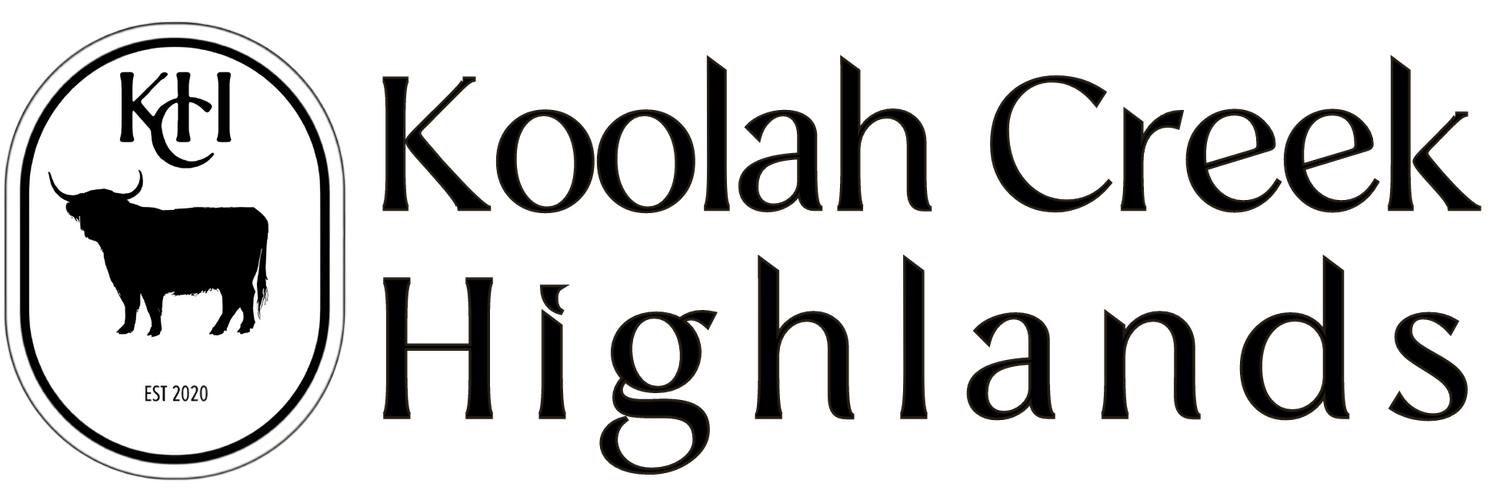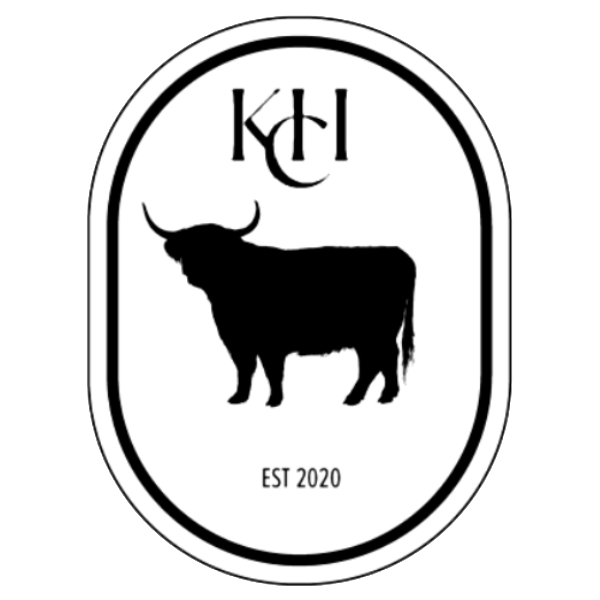Owning a Highland
It's easy to get caught up in the appeal of Highlands - the hair, the horns, the adorable personality!
Highlands make incredible pets, but as responsible owners we have a duty to ensure our animals' needs are met. Here are some basics to consider before you bring your new coos home.
Your property
Food and Water
Cows need unlimited access to clean fresh water, either from a trough, dam or creek. Grass is the best feed, but may not be enough outside the growing season - if there isn’t enough grass, you will need to feed hay (like oaten or lucerne) or silage.
Fencing
We use electric fencing and our cattle are very respectful of it. Otherwise, barbed wire is needed.
Shade
Scottish Highland cows come from - you guessed it - Scotland! They have a thick double coat to keep warm, and while they shed in summer, plenty of shade is an absolute necessity to keep them comfortable in our Australian climate.
Space
This is highly dependent on your location and rainfall. As a rough guide, 2 acres of grassy paddock per cow minimum. In winter, they may need to be hand fed supplementary feed like hay. Speak to your Local Land Service (LLS) for help determining stocking rates for your region.
Company
Cattle are highly social animals, they absolutely need other bovine companies (Highland or otherwise). We only sell calves in pairs, unless you already own other cattle. Did you know - a group of Highland Cattle is called a ‘fold’?
Yards
Somewhere they can be safely confined when they arrive, until they get to know you! Traditional timber yards or portable steel yards work well - portable yards are a great option as you can move them or add panels if your fold mysteriously grows… A basic set of yards is invaluable for all routine husbandry procedures.
Routine health care
Cattle are generally tough and self sufficient (they are livestock after all!) but as responsible animal owners we need to be aware of their needs. This includes vaccinations, parasite control, and other regional requirements like fly and tick prevention.
NLIS compliance
All cattle in Australia must be registered to their property with the National Livestock Identification Scheme (NLIS). This means you will need to apply for a Property Identification Code (PIC) for your property with the Local Land Service (LLS), then register for the NLIS so your new furry friends can be transferred to you!
You!
If you haven’t worked with cattle or other livestock before, we highly recommend spending some time around them getting comfortable before you bring yours home.
“Low Stress Stock Handling” is an organisation that provides short courses on how to handle livestock in a welfare-centered way. While the calves we sell are friendly and calm, a course like this will give you great insight into reading your cow’s body language, and will set you up well for the future - they don’t stay babies forever!




